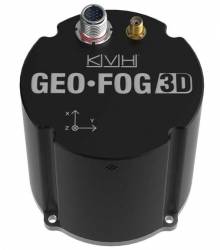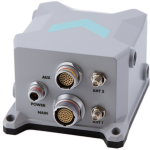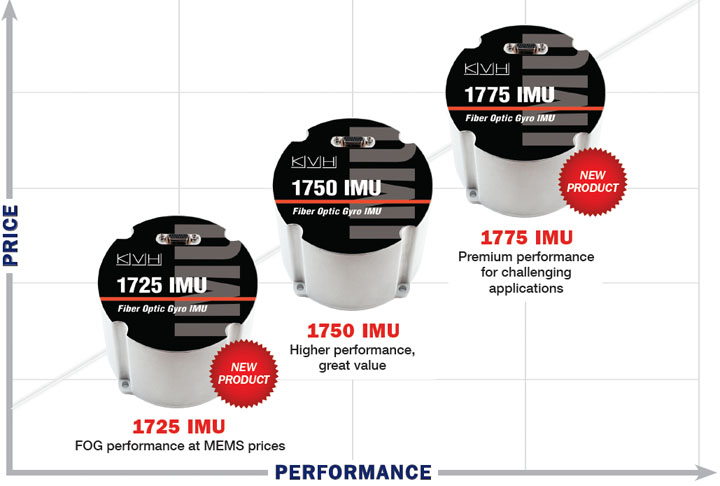
KVH Industries, Inc., has introduced the GEO-FOG 3D inertial navigation system (INS), targeting unmanned, autonomous, and manned aerial, ground, marine, and subsurface platforms, such as subsea remotely operated vehicles (ROV) or mining systems.
KVH Industries, Inc., has introduced the GEO-FOG 3D inertial navigation system (INS), targeting unmanned, autonomous, and manned aerial, ground, marine, and subsurface platforms, such as subsea remotely operated vehicles (ROV) or mining systems.
According to the company, the GEO-FOG 3D, based on the company’s high-performance fiber optic gyro (FOG) technology combined with centimeter-level precision RTK GNSS receivers and advanced sensor fusion algorithms, offers roll, pitch, and heading accuracies of .05 degree. The rugged systems are designed to deliver continuous, highly accurate position, navigation, and control information, even when GNSS is unavailable
The core inertial sensor for the new system is KVH’s 1750 inertial measurement unit (IMU) incorporating three axes of KVH’s DSP-1750 FOG accelerometer technology. The 1750 IMU is then fully integrated with a GNSS receiver and a three-axis magnetometer, a barometric pressure sensor, and a triple-frequency RTK GNSS receiver to deliver real-time, centimeter-level positioning and orientation measurements, KVH says.
The system’s sensor fusion algorithms automatically switch from loosely- to tightly-coupled filtering for improved performance under poor GNSS signal conditions. The system also offers high-speed update rates and rapid north-seeking gyrocompass capabilities for high-accuracy heading in environments when magnetometers and GNSS-aided heading cannot be used.
KVH has also introduced a variant, the GEO-FOG 3D Dual, an INS and attitude and heading reference system (AHRS). According to the company, this product features two GNSS antennas on a fixed RTK baseline that offers the same reliability and performance levels as the GEO-FOG 3D, with increased heading, pitch, and roll accuracy for static and dynamic applications where single antenna systems can be problematic. The GEO-FOG 3D Dual is designed for applications that require heading at system startup or in low dynamic conditions.
“KVH’s GEO-FOG 3D and GEO-FOG 3D Dual provide exceptional accuracy and outstanding performance in a single, small package (<1.6 lbs.), at price points never previously achieved in the industry,” says Jay Napoli, KVH’s FOG/OEM vice-president. “And, because KVH controls the entire design and production process, from creating its own optical fiber to packaging its FOGs together with other sensors for advanced applications, these new products – and all of our open-loop FOGs, IMUs, and INSs – offer outstanding accuracy and excellent durability at a lower cost than competing systems.”
Both the GEO-FOG 3D and GEO-FOG 3D Dual are designed to support current and future GNSS systems, including GPS, GLONASS, Galileo, and BeiDou. Both systems offer data rates up to 1,000 hertz and the ability to output data over a high-speed RS-422 interface or RS-232 interface to ease integration into a wide range of platforms.





